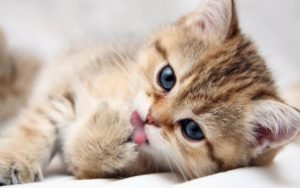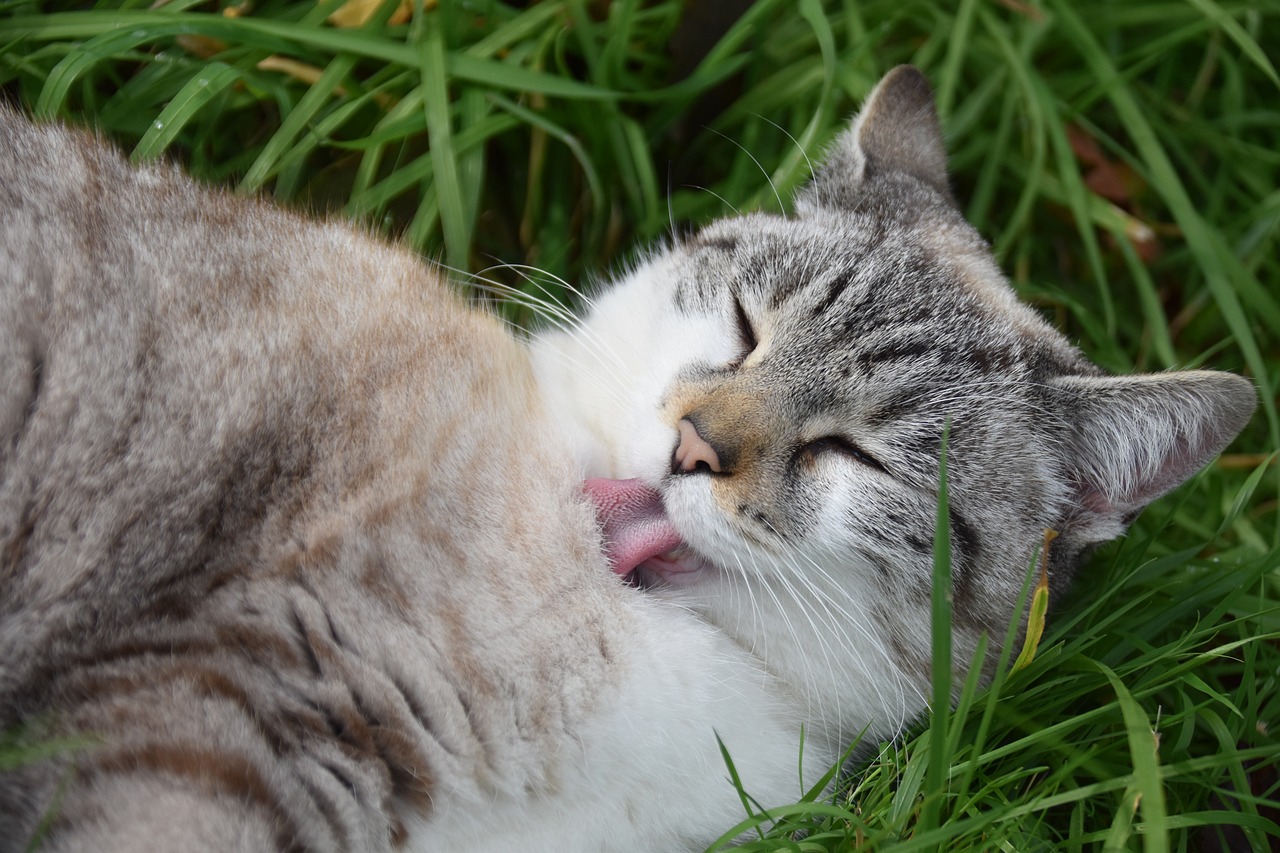
Photo by JACLOU-DL on Pixabay
Cats are known for their meticulous grooming habits, spending a significant amount of time each day cleaning themselves. One fascinating aspect of a cat’s grooming behavior is the rough texture of their tongues. Have you ever wondered why a cat’s tongue is so rough? In this article, we will explore the unique characteristics of a cat’s tongue and the various functions it serves.
1. Introduction
Cats are renowned for their cleanliness, spending a significant portion of their waking hours grooming themselves. As you watch your feline friend meticulously lick its fur, you may have noticed the rough texture of its tongue. This unique feature serves several important purposes, including grooming, removing dirt and loose hairs, reducing odors, and even cooling the cat’s body. In this article, we will delve into the intriguing world of cat tongues, exploring their structure, functions, and interesting facts.
2. The Structure of a Cat’s Tongue
Papillae: The Key to Roughness
The roughness of a cat’s tongue is attributed to tiny, backward-curving structures called papillae. These papillae are covered in hardened keratin, the same material found in a cat’s claws and our own fingernails. Just like a cat’s claws, the papillae act as miniature combs, allowing the cat to groom itself efficiently and remove dirt and loose hairs from its coat.
Pivoting Action for Grooming
The papillae on a cat’s tongue also play a crucial role in the grooming process. They can pivot at their bases, creating a flexible comb-like structure. When a cat widens its tongue for a grooming lick, the papillae stand up perpendicular to the hairs of its coat, maximizing contact and enabling effective removal of tangles and mats. This pivoting action is made possible by the attachment of the durable spines to the soft and flexible tongue beneath.
3. Grooming: A Full-Time Job for Cats

Removing Dirt and Loose Hairs
Grooming is an essential part of a cat’s daily routine. By using its rough tongue, a cat can remove dirt, debris, and loose hairs from its fur. This helps to maintain cleanliness and prevent the accumulation of potentially harmful substances on the cat’s coat. Additionally, grooming promotes better hygiene and reduces the risk of skin infections.
Reducing Odors
Cats are known for their keen sense of smell, and they are naturally inclined to reduce any odors that might attract unwanted attention. By grooming with their rough tongues, cats can eliminate scent molecules that might alert both prey and predators to their presence. This instinctual behavior allows cats to maintain a level of stealth and protect themselves in their environment.
Distributing Natural Oils
In addition to cleaning, a cat’s grooming routine helps distribute natural oils from its skin throughout its coat. These oils moisturize the fur, keeping it healthy and shiny. By using its rough tongue to comb through its fur, a cat ensures that the oils are evenly spread, contributing to the overall health and appearance of its coat.
Bonding with Other Cats
Grooming is not only a solitary activity for cats; it can also serve as a bonding experience. Cats living together in social groups engage in mutual grooming, known as allogrooming. This behavior helps to strengthen social bonds between cats, promoting a sense of trust and familiarity within the group. Allogrooming also facilitates the exchange of scents, further solidifying the social connections among cats.
4. Cooling Mechanism: Cat Tongues as Air Conditioners

Evaporative Cooling
One of the most fascinating functions of a cat’s rough tongue is its role in cooling the cat’s body. The papillae on a cat’s tongue are hollow and absorb saliva from the mouth during grooming. When a cat licks its fur, the saliva wets the fur’s surface, and as it evaporates, it creates a cooling effect. This evaporation process helps to regulate the cat’s body temperature, especially in warm environments.
Controlling Body Temperature
Unlike humans, cats do not sweat through their skin to regulate body temperature. Cats only sweat through hairless areas such as their paw pads and chin. Therefore, the ability to cool their bodies through grooming plays a vital role in maintaining a comfortable body temperature. The rough texture of a cat’s tongue, combined with the evaporative cooling mechanism, allows them to dissipate heat effectively and prevent overheating.
5. Curious Facts about Cat Tongues
- The spines on a cat’s tongue are similar in size and shape to the spines on their claws.
- The roughness of a cat’s tongue makes it an effective tool for shredding meat and picking up food while eating.
- A cat’s tongue can easily remove hair from its surface in a single clump due to the curve of the spines.
- The papillae on a cat’s tongue are also used to shred meat and facilitate the consumption of prey.
- A cat’s tongue plays a significant role in its sense of taste, with taste buds located on the surface.
6. The Importance of Grooming for Cats
Grooming is not just a cosmetic activity for cats; it is essential for their overall health and well-being. Regular grooming helps cats maintain a clean and healthy coat, prevents matting and skin infections, and removes parasites. Additionally, grooming stimulates blood circulation and can be a source of relaxation and mental stimulation for cats.
7. Tips for Cat Owners

As a cat owner, you can play a crucial role in maintaining your cat’s grooming routine. Here are some tips to ensure your cat’s coat remains healthy and well-groomed:
Regular Brushing
Brushing your cat’s fur regularly helps to remove loose hairs, prevent matting, and distribute natural oils. The frequency of brushing depends on your cat’s coat length and type. Long-haired cats may require daily brushing, while short-haired cats may only need brushing a few times a week. Use a brush or comb suitable for your cat’s fur and be gentle to avoid causing discomfort.
Dental Care
Dental hygiene is an important aspect of overall cat health. Regular brushing of your cat’s teeth can help prevent dental issues such as gum disease and tartar buildup. Use a toothbrush and toothpaste specifically designed for cats, and introduce dental care gradually to ensure your cat becomes comfortable with the process.
Pay Attention to Behavioral Changes
Changes in grooming behavior can indicate underlying health issues in cats. If you notice a significant decrease or increase in grooming activity, excessive licking in a specific area, or signs of discomfort during grooming, it is important to consult a veterinarian. These changes may be a sign of skin problems, allergies, or other medical conditions that require attention.
Conclusion
The roughness of a cat’s tongue is a remarkable adaptation that serves multiple purposes. From grooming and removing dirt to distributing natural oils and even cooling their bodies, a cat’s tongue plays a crucial role in their overall well-being. Understanding the unique characteristics of a cat’s tongue can deepen our appreciation for these fascinating creatures and their extraordinary grooming habits.
